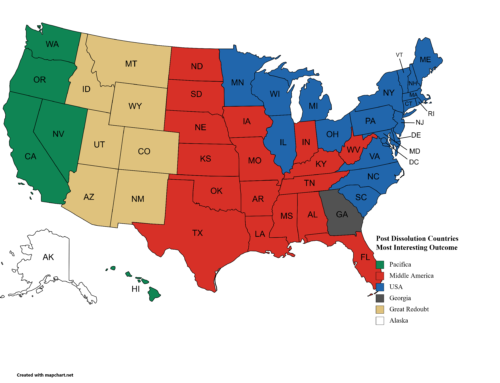In “The Secret of the Unicorn Tapestries,” (The Paris Review) Danielle Oteri heartens those of us who seek contemporary examples of excellent prose, historical accuracy and evidence, connecting ideas in seemingly disparate fields, and a sleuthing tenacity found in Chesterton’s Father Brown. This article ought to be assigned reading for half a dozen graduate programs outside the art world, from political theory, to history, to sociology, to critical thinking and methodology. All in a single essay.
If you’re a business leader, read this article and take the challenge to see if you can tie the lessons of this piece to some difficult decisions you are facing today. If you are an academic, read the piece and ask yourself whether you are open to changing your mind when a challenge rises to your particular worldview. If you are politician or civil servant, ask yourself what evidence you would need to change your mind on a given issue.
Narrative is a powerful driver. We so quickly accept narratives. But they’re rarely simple and more rare still, accurate. Narrative writers have an agenda. Truth is too complex to expose in all its various shades of grey in a short, pithy 140 characters. So narratives, memes and phrases must do for someone who wishes to advance a narrative. And all the more today when those narrative advancers know that the internet and social media have rendered our attention nearly incapable of reading any work of thick description.
Oteri, having worked her way up from the desk at The Cloisters, the museum where the tapestries are hung, to giving tours, delivers a delicious tidbit about a tour she gave and the detail she learned of that day:
I took visitors on a slow walk across the gallery, a strategic pause before the violence started. I jabbed my pointer finger at the hunter about to stab the unicorn in the rear end, then to the almond-shaped gash the unicorn tore with his horn into the side of the dog. I pointed to the rose forming from the dog’s bloody wound, a detail I had never even noticed until an eighth-grade boy asked me about it. Stunned that I hadn’t seen the rose before, I asked my boss, a twenty-five-year veteran of the museum, if she had. She hadn’t, but told me it wasn’t worth considering as it had never been mentioned in any of the official scholarship on the Tapestries.
In my own mind, I see narratives, in the best light, as helpful simplifying memes to assist in teaching history. Some narratives genuinely are developed for those reasons. But from there they devolve into a tool for those with agendas. The Inquisition narrative today is about the Catholic Church’s intolerance and lack of charity. The age of discovery narrative is about conquest of indigenous peoples. The narrative of the American settlement is one of Rugged Individualism. Like the narrative of the Unicorn Tapestries, some core truth is sufficient to run with a narrative off the main historical arc and down a tangential rabbit hole of, at best, laziness, or at worst, agenda.
In the case of the 25 year veteran of the museum, the rose growing out of the dog’s would was immaterial because it hadn’t been written about by art historians and critics. But it took a child to see it. What if all those historians had overlooked it like adults tend to do because they weren’t looking for it? And what happens when a teacher of Latin shows up to work as a guard and has an interest in those elements of an artwork that others have thought unimportant enough to even notice for 500 years?
And when someone dares challenge the narrative, the elites most often ignore the alternative theory and if they deign to recognize the upstart look down their noses at him. But when we scoff at new interpretations of old narratives, we miss out on two opportunities. The first is to practice our critical thinking and evaluation skills. These skills are key to us continuing to know what we know and evaluate it as good. Or not. The second is to test hypotheses and if found sturdy, then altering our understanding of knowledge. That can only make us better as individuals and as a society.
That is what Howard Comeau, Howie, brought to the museum and to Oteri’s life. A nobody in the eyes of the elite, one to whom they at best ascribed harmless intentions, was one to be paid for services as a museum guard, and ignored. Yet it was Howie that opened Oteri’s eyes and through a long process caused some art historians to re-evaluate what they knew about this series of tapestries and the role of art in late medieval France. That’s not nothing.
Oteri’s essay, a mere 5000 words, found a good home in The Paris Review, which publishes just these kinds of articles. But one wonders at the process by which more widely read outlets such as Harper’s, The Atlantic, or the Sunday New York Times which, in days past would have all bid to publish this piece, have slowly cut back on this type of essay. Instead of being too long, it left me hoping that Oteri is able to follow this up with a book. The essay would naturally separate out into longer chapters on French history, the art of tapestry weaving from the middle ages to today, the murky world of art provenance and museum acquisition, but interwoven throughout with Howie and how this man, unseen and irrelevant to elites, knew more than all of them. On his own dime, no less. In much the same way Bill Buford interweaved a very honest telling of Mario Batali’s life and rise in the culinary world between chapters of the history of cooking in Italy, the terrible world behind the doors of a commercial restaurant kitchen and the life of the greatest butcher in the world, Oteri has a natural story to tell based around a compelling person, one who the reader is instantly drawn to.
Here’s to hoping Danielle Oteri writes a lot more. Whether it is a book to expand on the tale of the Unicorn Tapestries and Howie Comeau, or of food and wine and travel, I’ll be eager to read her. I hope you do as well.






Leave A Comment